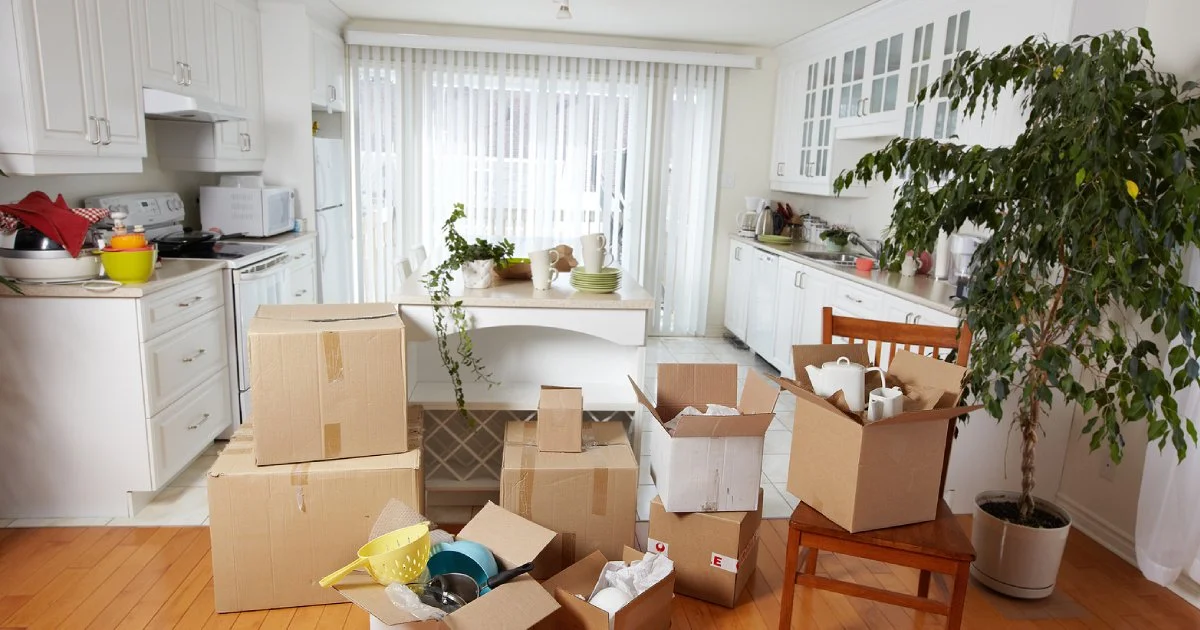How To Move Your Entire Kitchen Without Breaking Anything
The kitchen is often one of the most challenging spaces to pack during a move. With its combination of fragile glassware, heavy appliances, sharp utensils, and perishable food, it demands extra care and attention. Unlike clothing or books, kitchen items vary greatly in shape, size, and fragility—making this room a potential hotspot for breakage if not handled correctly. But with the right planning and techniques, you can move your entire kitchen safely and efficiently.
Start with a declutter before anything else
Before packing even a single plate, go through every cupboard and drawer to purge anything you don’t use or need. From mismatched plastic containers to rarely used gadgets, now’s the perfect time to lighten the load. Whether you’re hiring movers instead of moving on your own or doing it yourself, a smaller kitchen inventory means fewer items to pack, move, and unpack—and less chance of things going missing or breaking.
Set aside items that can be donated, recycled, or thrown out. Be especially mindful of expired pantry items or condiments that have been sitting unused for years. Decluttering at this stage makes the rest of your kitchen move much more manageable.
Sort and group items by category
Instead of packing randomly by drawer or shelf, group similar items together. Keep all baking tools in one box, utensils in another, and pantry items grouped by type. This method helps maintain order during packing and makes unpacking at your new place significantly easier.
Be strategic with how you box items. For example, pack heavier items like cast iron pans at the bottom and lighter items like plastic measuring cups on top. Always cushion fragile items with adequate padding.
Use the right materials and label everything
Don’t skimp on packing materials when it comes to your kitchen. You’ll need strong boxes, bubble wrap, packing paper, and plenty of tape. Use dish boxes (also known as dish barrels) for glassware and crockery—they're sturdier and offer better protection.
Wrap each plate, bowl, and glass individually, stacking them vertically in the box to reduce surface pressure. Cushion the bottom of each box with crumpled paper and fill any empty gaps to prevent shifting during transit. And remember—label every box clearly. Use “FRAGILE” labels where appropriate and indicate which side should face up. Detailed labelling not only protects your items but also saves time when unpacking.
Empty and prepare your appliances properly
Large appliances like the fridge, oven, and microwave need specific preparation. Defrost your refrigerator at least 24 hours before the move, clean it thoroughly, and remove all shelves or secure them with tape. For gas cookers, professional disconnection is often required—check with your supplier or movers for assistance.
Smaller appliances like blenders, mixers, and coffee machines should be cleaned, dried, and packed in their original boxes if available. If not, wrap them in packing paper or bubble wrap and place them in sturdy boxes with adequate padding. Remove any detachable parts and pack them separately to avoid damage.
Take extra care with knives and sharp tools
Packing knives incorrectly can lead to accidents and damage to other items. Wrap each knife in several layers of packing paper or use protective sheaths. Bundle them together securely and label the package clearly. Avoid placing loose knives in boxes—they can shift during the move and pose a serious hazard when unpacking.
The same goes for peelers, graters, and other sharp-edged tools. Wrap them properly, store them together, and always pack them away from more delicate items like glassware.
Create an essentials box for your first few days
Even with the best intentions, you may not unpack your entire kitchen immediately. To avoid stress, pack a separate essentials box with everything you’ll need for the first few days in your new home. Include a few plates, cups, cutlery, a saucepan, dish soap, a sponge, and perhaps your coffee machine or kettle.
Having these essentials easily accessible helps you settle in comfortably while you gradually unpack the rest of your kitchen.
Trusting professionals can save you time and stress
Moving a kitchen involves more than just boxing up items—it requires strategic planning, careful handling, and a deep understanding of packing techniques. This is where professional movers in Singapore can make a real difference.
Trained packers know exactly how to protect fragile kitchenware and ensure your appliances are transported securely. If you’re short on time or worried about managing it all, hiring movers and packers in Singapore can relieve you of the stress and greatly reduce the risk of damage.
Professional moving services often offer packing as part of their package, using high-quality materials and expert techniques. They also come equipped to handle bulky items like dishwashers or refrigerators, something that can be difficult to do on your own.
Plan your move with confidence
Moving your kitchen doesn’t have to be a nightmare. With a combination of smart organisation, quality packing materials, and perhaps a little help from the pros, you can ensure that everything arrives intact and ready for use in your new home.
For a seamless and stress-free experience, reach out to Reddot Movers—Singapore’s trusted relocation partner who understands what it takes to move a home with care and efficiency.

